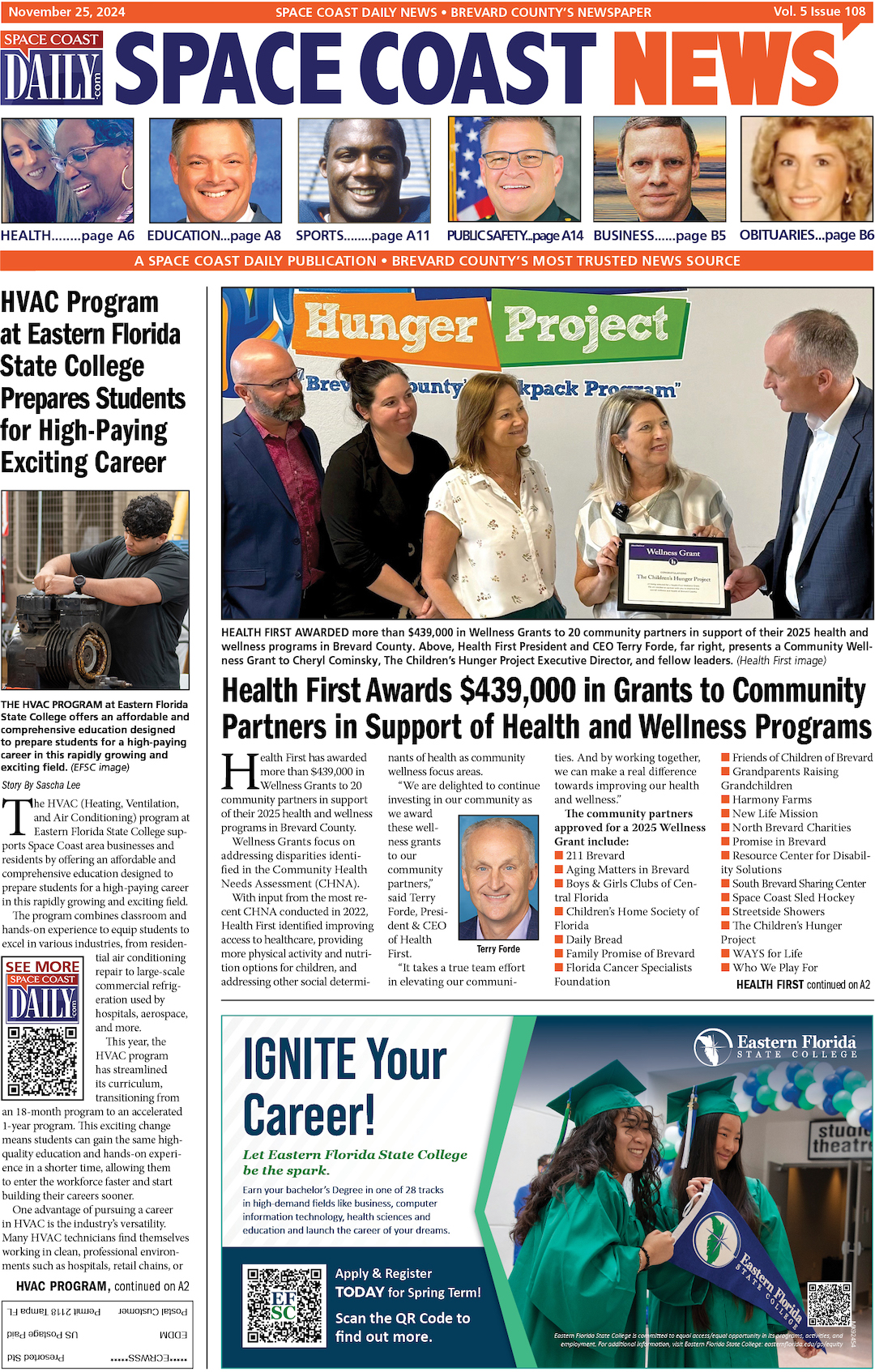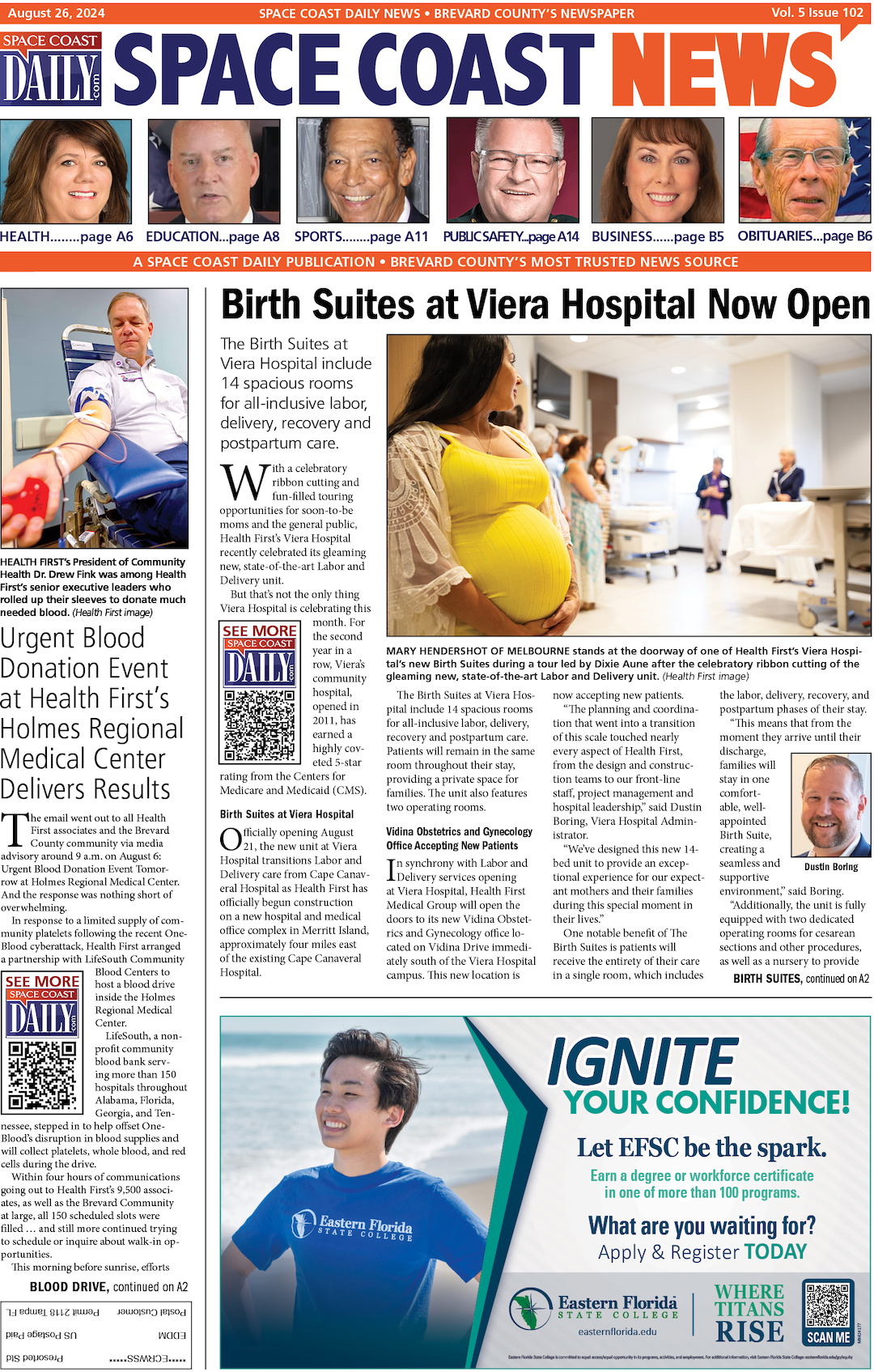How Health Insurance Really Works
By Space Coast Daily // June 1, 2020

Health insurance effectively protects yourself and your assets from the sky-high costs associated with medical treatment. Without sufficient health insurance coverage, you could find yourself in financial ruin due to suffering an uncontrollable health condition. It’s so important that the number one root cause of bankruptcies is the high cost of medical care.
Unfortunately, the entire health insurance industry is extremely complex. Because of this, a lot of people don’t fully understand it and get easily overwhelmed with trying to grasp it.
Here is a basic explanation of how health insurance works and how it became the dominant delivery vehicle for health care in the country.
Why You Need It
Health insurance is an absolute must-have for every American due to the sky-high costs of even basic health care. Unless you are extremely wealthy and you can afford to pay sky-high medical bills out of pocket.
However, if you are over the age of 65 or under the income threshold, you can qualify for assisted coverage under either Medicare or Medicaid. Those that are very wealthy might be able to afford to pay out of pocket for some of the more expensive medical costs.
Everyone that falls anywhere in the middle is going to need to purchase their own health insurance or they risk financial ruin due to an unexpected medical bill. Because it is so common in society, a lot of people have completely lost sight of the actual purpose of health insurance.
If you understand car insurance or even home insurance, it’s the same concept. You get this insurance to protect your assets from the devastating costs that could stem from a medical emergency, serious accident, or even a chronic disease.
However, unlike the other insurances, health insurance will make it possible for you to get medical care for when you need it the most.
If you don’t pay for or have car insurance, you will still be able to find other modes of transportation. Whereas, if you happen to suffer a broken leg, you won’t be able to get it corrected until you have enough to pay out of pocket to visit the emergency room or doctor.
How To Choose Your Health Insurance
There are countless options available when it comes to choosing plans for health insurance companies. However, prior to choosing one, you will need to look at the different combinations of everything from deductibles to co-payments to coinsurance to premiums.
For example find out here what is Medicare Part C.
Monthly premiums are required to be paid in monthly instalments whether you use your insurance by making a claim or not. This will provide the necessary cash flow to the insurance companies to be able to pay out medical claims. The deductible is what you pay prior to the insurance company covering anything.
Your deductible can end up having a significant range depending on your insurance provider and plan. You will find deductibles ranging anywhere from as little as $500 per year to as much as $10,000 per year.
Typically, you will only be able to access the lower deductibles when you have a company-sponsored plan. These plans are paid annually which means you will have to start all over once it hits January 1st each year.
A co-payment will be required for each visit and this payment amount can range depending on your provider and plan.
Typically, a copay will start at around $20 for a doctor visit, $50 for a visit to the doctor, $50 for visiting the hospital, and around $10 to $20 for a single prescription. You will be responsible for paying 100% for the visit until you meet the respective deductible noted on your plan.
Coinsurance is the total percent you have to pay for various things like medical procedures including surgeries and hospital visits. These things can be combined.
For instance, if your medical doctor visits you while you are in the hospital recovering from surgery, you will likely be responsible for paying a co-payment for the doctor’s visit along with coinsurance for the hospital stay.
You might be wondering why insurance companies charge all of these things. The main reason is to keep you from visiting the doctor or hospital every time you feel a minor cold coming on. Insurance companies feel as if health care costs were free or low enough, it would cause their out of pocket costs to increase exponentially.
That being said, the Affordable Care Act was signed and it notes that out of pocket expenses cannot exceed $6,600 for an individual or $13,200 for a family. Once this limit is reached, the insurance company is responsible for the remainder.
Due to the countless things that have to be considered, it can make choosing the right health insurance company and the right health care plan very complex. You pretty much have to play the odds with your own future health.
For instance, you may be much more willing to pay higher monthly premiums if you suffer from a chronic illness or condition where you will be needing frequent visits so you can save money on your coinsurance percentage or even lower your deductible.
However, if you are someone who is currently in good health, you might be looking to save as much as possible by getting a low premium plan with a higher deductible. After all, you might be willing to take much more of a risk on having to pay more out of pocket for your health care because you believe you are less likely to require expensive procedures.
At the end of the day, the lower your deductible is, the higher the premium you will have to pay. Likewise, the higher your co-pay or co-insurance will be.
As the health care costs in this country have continued to skyrocket, a lot more people are willing to fork out more for plans with higher deductibles in order to keep their monthly premiums down to an affordable level. Obamacare attempted but wasn’t able to correct this underlying flaw in the health care system in this country.
You can find the life insurance essentials at Insurance and Estates, do check them online.
Why America Relies On Health Insurance To Pay For Medical Coverage
Prior to the Second World War, the majority of people in the country didn’t even have health insurance. The policies that used to exist really only covered the cost of a hospital stay. However, after the war, the federal government put in place a wage freeze in order to stem inflation.
However, this caused companies to be unable to afford giving out raises to their best employees. Therefore, they switched to incentivizing them with medical benefits including health insurance.
In the year 1954, the Internal Revenue Service (IRS) made the amount you paid for health insurance premiums non-taxable. Meaning, an additional dollar towards health insurance was more valuable than an additional dollar of salary due to the salary being taxable.
The Tax Policy Center estimated that this break in tax increased the deficit in the U.S by around $250 billion per year. However, if politicians wanted to remove it, they would have a very difficult time getting re-elected.
This is primarily the case because it is sort of like the government providing a subsidy for those in the upper-middle classes and even the wealthy.
The center found that the typical average benefit for the average household was around $281 for those that were in the 15% bracket. However, for those in the 25% bracket, that amount increased to $374.
Health Insurance Alternatives
A lot of different countries throughout the world have implemented something called “Universal Health Care.” This is a system in which the government is responsible for paying the health care costs as it does for public education and even for defense. It is essentially the concept of expanding the benefits of Medicare and Medicaid to everyone including the middle class. For instance, when someone who is French visits the doctor or hospital, the government will pay the tab.
There are inherent downsides to this. For one, it takes a while to book an appointment with a specialist or even to receive a non-emergency medical procedure.
That being said, it does come with the benefit of not having to worry about dying because you cannot afford the necessary medical treatment.
When Hilary Clinton looked to implement this type of universal health care in the USA, the health insurance companies fought back against it.
Obamacare was initially presented as a universal health care system, but the insurance companies made changes that required their products.
One of the alternatives to health insurance is self-pay. It is where you pay for your own health care costs. They would negotiate in order to try to get the best deal.
would end up lowering the total costs for health care. They would be able to do things like taking out loans for expensive medical procedures as they would when they purchase a house. They would also have the incentives to take better care of their own health.
That being said, it would likely force those who don’t have the means to choose between getting proper medical attention and care with buying food and other necessities. Getting access to adequate health care has become apart of today’s new American Dream.
Research has shown, if you make more money, you will likely have better health as income inequality continues to lead to health care inequality.
CLICK HERE FOR BREVARD COUNTY NEWS













